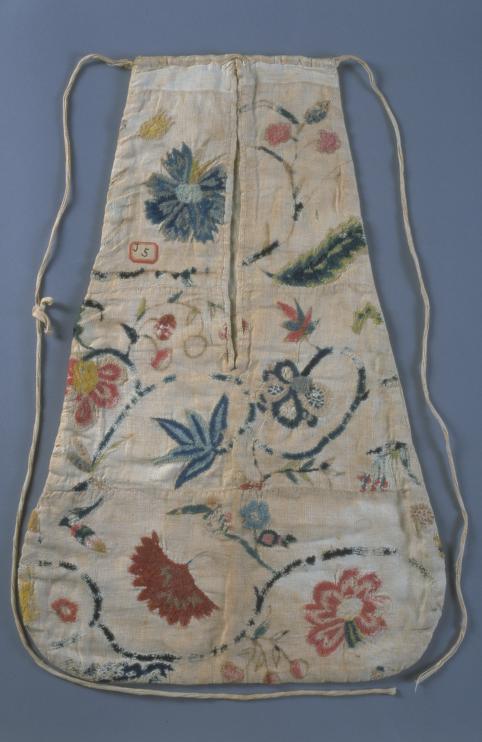What makes something created by human hands “art”? Society has both flexible and rigid definitions around this question, and such delineations are constantly changing. At the height of Victorian of photocollage, scrapbooks were not, perhaps, considered art. Today, we might consider them on the verge–but why are they not given full privilege as artistic pieces, displaying individuality and creative skill?
Elizabeth Siegel’s discussion of how photocollage has been excluded from art historical studies confronts our estimation of women’s work, and whether it is craft, compilation, or art. This issue reminds me of the studies surrounding Colonial American samplers. Samplers were important projects for young women in 17th-18th century New England, showcasing their talent and capability with needlework. They would start on these works at a young age, from a simple cross-stitch to more developed and complicated pictures of people and plant life. Often, samplers depicted the alphabet or other standard patterns and sayings, and were begun at around five years of age, then became more complex as the girl grew. While many of these have the names, years, and ages of their makers on them, they are not considered art in the same way as, say, a painting.

Samplers can often look similar due to the fact that they followed conventions and popular patterns, but each was made by the hands of an individual, choosing her own colours and varying in style and execution. Above all, they contributed to the development of the girl’s skill with her fingers, something necessary in the middle class, as women would do much of the sewing for their clothes and the clothes of their families. In the upper classes, samplers displayed the delicacy and domestic talent of young women. Do we consider these works of art, or do they, too, occupy the murky in-between place of Victorian photocollage?

There is a long tradition of works by women and girls being passed off as “handiwork” or “craft”, the result of women’s work, which has little artistic value. Like photocollage, samplers were displayed in the home, hung to demonstrate the skill and intelligence of the girls who made them. Today, they are useful for determining the level of literacy and education of young women in Colonial America. Art historians can place the patterns in certain regions, and trace the popularity of different stitching patterns. Now, samplers are displayed in museums alongside works of art, so maybe it is finally time to consider works such as these as more than mere “ladies’ pastimes”.
Sources:
History of samplers: http://americanhistory.si.edu/collections/object-groups/american-samplers
More on samplers in the Pioneer Valley: https://deerfield-ma.org
Image 2: Digital Collection -Embroidered pocket
There are similar discussions constantly going on in the postmodern dance world: what constitutes dance? Is it simply presentational movement? Does this mean that football is a type of dance? You are asking similar questions here about what constitutes “art” as opposed to “crafts.” I think we often judge this type of categorization based on the purpose of a particular presentation of work. You created this sculptural installation as a representational narrative of a folk tale? Art. You created this sampler to exhibit your skills of needlework and color design? Not art. Obviously we need to put pressure on these types of categorizations that elevate the universal above the individual. These samplers are only now gaining importance because of what they can tell historians about the universal life of this type of woman, not because of the choices of the individual herself, or her individual history. And yes, of course, the fact that these were created by women lends to the tension of categorization. Take as a counterexample Bach’s etudes. As a whole we consider them to be art, yet they were created as educational exercises for piano students. How does this differ from the samplers and the conventions with which girls and women were creating them?
By: Isabelle Kirwin on November 9, 2018
at 1:16 pm